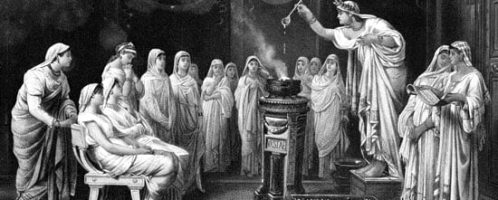If you have found a spelling error, please, notify us by selecting that text and pressing Ctrl+Enter.
Curiosities of ancient Rome (Unknown facts)
The world of ancient Romans abounded in a number of amazing curiosities and information. The source of knowledge about the life of the Romans are mainly works left to us by ancient writers or discoveries. The Romans left behind a lot of strange information and facts that are sometimes hard to believe.
Cicero scientist
Cicero is known as the most famous lawyer of ancient times and belongs to the most eminent speakers, lawyers of all time.
We know him less as a philosopher and, as we would say today, a scientist aware of the discoveries also in other areas of knowledge. Natural sciences were called at the time of Cicero as physiology.
Augustus worshiped only old cults
Suetonius claims that emperor Augustus worshiped only old and permanent cults, i.e. cult of Ceres – he participated in the her mysteries. As he learned some secrets about the mysteries, he later settled the dispute between the participants of the rituals by removing the other judges from the tribunal.
Augustus in harmony with rituals
Gaius Octavius, known also as Augustus, during his rule followed divination regarding certain days. He never left he city on the day after the day of the fairs. He also did not start anything in Nonae, explaining that he was willing to “avoid the bad omen from the name”. Nona in Roman mythology was the name of one of the Moirai – Clotho (Greek mythology), spinning thread of human life, and at the same time a goddess helping the nursing.
Ancient people knew power of science
The ancient Romans realized the power of science and its importance. Gaius Petronius in one of his works (Banquet of Trimalchio) praises the power of knowledge in following way:
Romans models for building design
In the process of building design and construction, the ancient Romans used scaled models that helped to design buildings and present their final form to clients.
Manumission in ancient Rome
The formal procedure for liberation of the slave (manumissio vindicta) took place in front of the praetor or consul and only with his consent (addictio). At least three people had to take part in the process: a slave, an owner and an outsider (adsertor libertatis) who was free and certified the freedom of a slave.
Gladiatrix
The main difference between a male and a female gladiator was the fact that a woman fighting in the arena was not a slave. Probably in the later Roman period, gladiatrices (singular gladiatrix) were also people from slavery. Originally, however, women voluntarily took part in gladiatorial battles, seeking adventures.
Description of zodiac signs according to Trimalchio
Description of zodiac signs according to Trimalchio, character of “The Banquet of Trimalchio” of Petronius.










